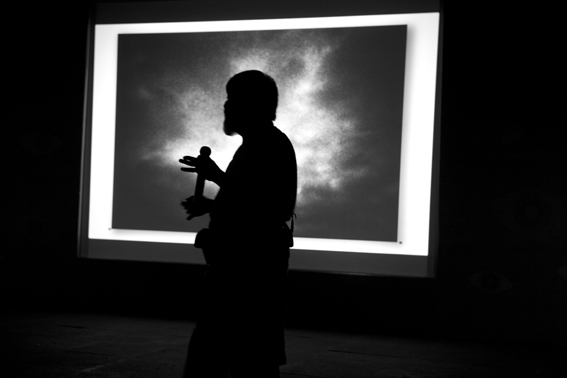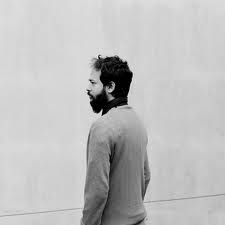They were professionals I respected and admired, but they had found my comments disparaging. ?What about the work we?ve been doing all these years?? they had hurtfully said. I had reflected upon the fact that while there were some great photographers in India, it didn?t really have a photographic movement. Until now.

Whenever I passed through Delhi, Raghu, Pablo, Dayanita, Prashant and other photographer friends would all meet at the India International Centre and try and kick start this movement. ?Karne hoga yaar? (we?ve got to do it mates) was the rallying cry we would leave each other with, but while several initiatives had been taken, it was the Delhi Festival, launched in October 2011, that showed the first signs of that collective endeavor.
It was the 18th December 1998. The day Pathshala was launched. Indian photographer Saibal Das had taken me aside to quietly ask, ?is this the ?real? Reza?? I had nodded and he went on ?can I touch him?? Reza Deghati, the famous National Geographic photographer, chuckled when I explained. We all paused as Saibal approached – and touched – his idol.
It took me back to 1991, when Fred and Wendy Baldwin had walked me through the exhibition spaces in Houston. I had never been to Fotofest or any other festival, but listening to Fred and Wendy, I could see myself surrounded by images and image-makers.
Arles was my first festival. Mexican photographer Pedro Meyer and I had known each other for many years, but we had never met. I barely survived the crushing hug at our first encounter. The joy of seeing outstanding work all across the city. Stunning multimedia displays on the giant Amphitheatre. The excitement of walking amidst household names in photography, seeing, sometimes touching, my heroes, made me realise this was a feeling that had to be shared. I wish I could have taken a suitcase full of photographers with me to these festivals. I settled for two. In a subsequent trip to Arles, we stopped on the way in Paris and Abbas, the chairman of Magnum, took my two young colleagues Shehzad and Mahmud on a guided tour of the agency. I recognized that glazed look in their eyes.
Meeting Raghu Rai on a boat from Hong Kong to Kowloon. Lunch at Chelsea with Raghubir Singh, Sunil Janah and Ram Rahman, courtesy of Max Kozloff. Working with Dayanita Singh, Eugene Richards and Mark Abraham in my first curatorial assignment, have been seminal moments in my own photographic career. I remembered the high I got from each of those encounters. This was a high that needed to be shared. I needed a very large suitcase. If the photographers couldn?t be taken to the festivals, the festivals would have to come to them. So Chobi Mela was born. That was 1999.
Little had we realized what an electrifying effect this festival would have. Photographers who came over, went back energized and set up their own festivals. Besides the Chinese mega events, small intimate festivals took place in Singapore, Malaysia, Cambodia and Thailand. India however, was still lagging behind. That was when Prashant Panjiar and Dinesh Khanna stepped in. They weren?t foolhardy youngsters, and a great deal of thinking and planning went into staging this important event.
When asked why Delhi Fest became such an instant success, Prashant would in his typical manner respond ?it was because Dinesh and I are not superstars?. ?While I certainly dispute his non-superstar status, I know what he was getting at.? Prashant and Dinesh were going to make the festival a success and not let their egos get in the way.? As brave people do, the duo had some luck on their side. It was ambitious to take on such a diverse programme on their first attempt. The choice of the magnificent grounds of the Habitat Centre, was key to making it work. I am sure a lot went on behind the scenes to make it happen. The Amphitheatre, the classrooms, the open air space and the splendid location were central to creating the atmosphere of the special event
Fine shows, interesting talks, the organic mix of the experienced and the new, combined with ambitious curatorial projects, made it seem it was a festival run by old hands.? I am sure there were cracks, as there always are, but whatever might have gone on behind the scenes, the show on stage went without a blip.
For me, it was the camaraderie between the photographers wafting throughout the festival that made it particularly special. My lasting memory – of the inevitable photo op -with Raghu Rai, Pablo Bartholomew, Prashant Panjiar, Prabudhdha Das Gupta and I, will forever linger. Prabudhdha is no more, but what these fine photographers have together built, will I am sure, outlast them all.
Shahidul Alam
Dhaka
September 2013
Tag: Delhi Photo Festival
Work in progress
a Delhi Photo Festival workshop with?Munem Wasif
In partnership with?Pathshala South Asian Media Institute, Delhi Photo Festival invites photographers who are currently working on a long-term project, a work in progress, to apply for a workshop to be held in New Delhi from September 22 to 26, 2013.

Participants will?not?shoot new work during the workshop. Instead participants will produce/continue a body of work before coming to the workshop as it is important for any photographer working on a long-term project to realize that beyond a certain point, his or her work can take many directions and forms.
The resulting work may be presented as a slideshow at the Delhi Photo Festival on Sept 30, 2013.

WHO SHOULD APPLY
The workshop is open to any photographer with an ongoing, long-term project or body of work, irrespective of age, gender or genre of photography. It is meant for someone who is interested in pushing their work beyond their comfort zone, in sharing ideas and working in a group.
HOW TO APPLY
Send an email to?delhiphotofestival@nazarfoundation.org?with ?WORKSHOP APPLICATION: Work in Progress? written in the subject line of the email and attach the following:
??20 to 40 low-resolution JPEG photos from a long-term project you are already working on and intend to continue working on in the workshop.?(Please note that each photo should be 800 pixels on the longer side saved in a zip folder. Maximum size of the zip folder should not be more than 5 MB).
??A Brief description of your project?(not more than 300 words)
??A Statement of Purpose explaining why you are interested in this workshop and what you hope to learn from it?(not more than 300 words)
??A CV or a short biography
??Proof that you need scholarship, if you are applying for the same.
COURSE STRUCTURE & WORKSHOP SCHEDULE
Online Interactions: 27 Aug to 21 Sept
Workshop in New Delhi: 22 to 26 Sept
After the students are chosen, in the days leading up to the workshop, Munem Wasif will begin working with each participant online – reviewing works and giving them feedback through platform such as Facebook. Students will follow the instruction and upload their work online.
During the final 5 days of the workshop, that will take place at Sanskriti Kendra, New Delhi from September 22 to 26, 2013, Wasif will show his work and explain his working process. The next few days will be spent doing group reviews and editing where everybody will have to present their work and talk about their experience. Finally the participants will be given assignments to present their work and think about its final form. Though the workshop will encourage participants to focus more on the process of experimenting and pushing personal limits than on its final outcome, the resulting work promises to be exciting.
About Munem Wasif
Having grown up in a small town Comilla, Bangladesh, Munem Wasif?s dream kept changing from becoming a pilot to a cricket player and then a photographer. But none of these choices made his father happy. Later he shifted to comparably a big city Dhaka. He found his graduation in photography from Pathshala a life changing experience, which made him aware of his stories, gave him a photographic voice to photograph the dying industry and afflicted workers of jute and tea, excluded people and disrupt lands due to environmental change and salt water, a nostalgic city of love, Old Dhaka.
Wasif prefers to photograph his known people, therefore his country Bangladesh, just to start from the inside of a story. He never finds it a problem to be treated as a storyteller of humanistic tradition, classical in photographic approach, as long as it shows compassion and his emotional experience for the people he photographed. With an outlook of a traditional narrative style, he starts from the opposite of clich?s, when he looses his control from one direction of a story, and allows himself to grow in different directions, like branches on a tree, yet with the same root of humanistic approach.
Wasif won ?City of Perpignan Young Reporter’s Award? (2008) at Visa pour l?image. Prixpictet commission (2009), F25 award for concerned photography from Fabrica (2008), Joop Swart Masterclass (2007). His photographs have been published in Le Monde, Sunday Times Magazine, Geo, Guardian, Politiken, Mare, Du, Days Japan, L’espresso, Lib?ration, Wall Street Journal and many others. He had exhibitions worldwide including, Musee de elysee & Fotomuseam Winterthur in Switzerland, Kunsthal museum & Noordelicht festival in Netherlands, Angkor Photo festival & Photo Phonm Phen in Cambodia,?Whitechappel Gallery in England, Palais de Tokyo & Visa pour l?image in France and Chobimela in Bangladesh.
Since 2008, he is represented by Agence Vu in Paris. He was one of the curators of Chobimela VII, International Festival of Photography. Currently he is working on his upcoming book on Old Dhaka, which will be published from France in September 2013. Currently he is teaching documentary photography in Pathshala, South Asian Media Institute, Dhaka.
